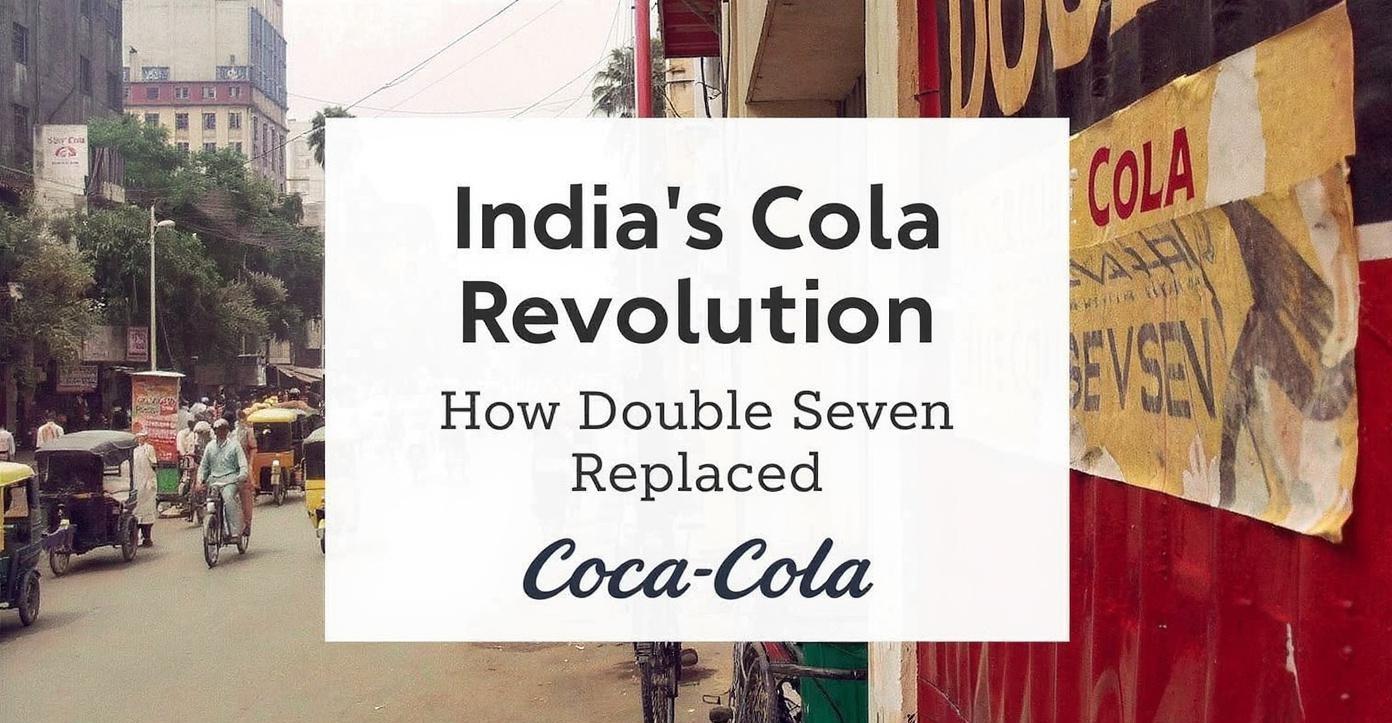The Story Behind Double Seven’s Cola Success

The late 1970s were a transformative period in India’s beverage industry, marking the era known as India’s Cola Revolution. The exit of Coca-Cola created an opportunity for domestic brands to flourish, and Double Seven quickly became the symbol of India’s ambition to assert economic independence. The launch of Double Seven was widely recognized, and India’s Cola Revolution highlighted the government’s efforts to promote self-reliance and foster indigenous industry in consumer markets.
The Birth and Development of Double Seven
Double Seven was introduced by Modern Food Industries, a government-owned enterprise, and named after the year 1977 to signify political change and new industrial vision. Scientists at the Central Food Technological Research Institute in Mysore developed the formula, using locally available ingredients to ensure affordability and consistency. Double Seven was positioned as an Indian alternative to Western colas, emphasizing quality, local production, and national pride.
Government Vision and Strategy
The launch of Double Seven was part of a broader government plan to encourage domestic enterprise and instill national pride. The Janata Party emphasized supporting local products as a civic responsibility, connecting consumer choices with India’s Cola Revolution. Marketing campaigns highlighted patriotism, economic independence, and the importance of strengthening homegrown industries.
Filling the Market Gap
Coca-Cola’s departure was prompted by Indian regulations requiring foreign companies to either partner with local investors or reduce ownership. Coca-Cola’s refusal created a vacuum that Double Seven was intended to fill. The government leveraged the Cola Revolution to encourage citizens to adopt domestic alternatives, emphasizing self-reliance and the symbolic value of supporting Indian industry.
Competition and Market Challenges
Despite government backing, Double Seven faced stiff competition from private brands like Thums Up, Campa Cola, and Duke’s. These competitors used aggressive marketing, wider distribution, and a keen understanding of consumer preferences to dominate the market. Double Seven, operating under a bureaucratic framework, faced slow decision-making, limited marketing budgets, and restricted distribution. While patriotic messaging resonated with some consumers, it could not secure the market dominance achieved by private rivals.
Branding and Public Engagement
Double Seven’s branding emphasized local production and national pride, aligning with the Cola Revolution. Advertising campaigns highlighted themes of self-reliance and the benefits of choosing domestic products. Packaging reinforced these ideals, fostering loyalty among Indian consumers. However, private competitors’ aggressive strategies eventually overshadowed Double Seven, reducing its visibility in stores nationwide.
Political Changes and Decline
The return of Indira Gandhi’s government in 1980 negatively affected Double Seven. The brand, linked to the Janata Party, lost political support, which resulted in decreased production, distribution, and promotion. Gradually, Double Seven disappeared from store shelves, but its contribution to India’s Cola Revolution remained historically significant, representing an effort to foster domestic enterprise through government-led initiatives.
Legacy in India’s Beverage Industry
Double Seven continues to be remembered as a key player in India’s Cola Revolution. Its launch demonstrated India’s ambition to promote indigenous industry and reduce dependence on foreign corporations. Although the brand did not achieve long-term commercial success, it remains an example of government-backed initiatives that aimed to encourage self-reliance and strengthen local enterprise.
Lessons from Double Seven’s Success
The story of Double Seven illustrates the challenges of implementing policy-driven initiatives in competitive markets. While patriotic branding and government support were valuable, operational efficiency, marketing agility, and robust distribution were essential for lasting success. The Cola Revolution highlighted the potential for domestic brands to emerge and thrive when strategic support is combined with consumer adoption.
Consumer Nostalgia and Historical Impact
Double Seven continues to evoke nostalgia among older generations who remember it as a patriotic and homegrown alternative to foreign colas. Its taste, packaging, and symbolic role in India’s Cola Revolution remain part of the nation’s cultural and industrial memory. The brand’s story offers insights into the evolution of domestic enterprises, consumer behavior, and the influence of political policy on markets.
Read Full Article : https://bizinfopro.com/news/marketing-news/indias-cola-revolution-how-double-seven-replaced-coca-cola/
About Us : BizInfoPro is a modern business publication designed to inform, inspire, and empower decision-makers, entrepreneurs, and forward-thinking professionals. With a focus on practical insights and in‑depth analysis, it explores the evolving landscape of global business—covering emerging markets, industry innovations, strategic growth opportunities, and actionable content that supports smarter decision‑making.
- Art
- Causes
- Crafts
- Dance
- Drinks
- Film
- Fitness
- Food
- Giochi
- Gardening
- Health
- Home
- Literature
- Music
- Networking
- Altre informazioni
- Party
- Religion
- Shopping
- Sports
- Theater
- Wellness




